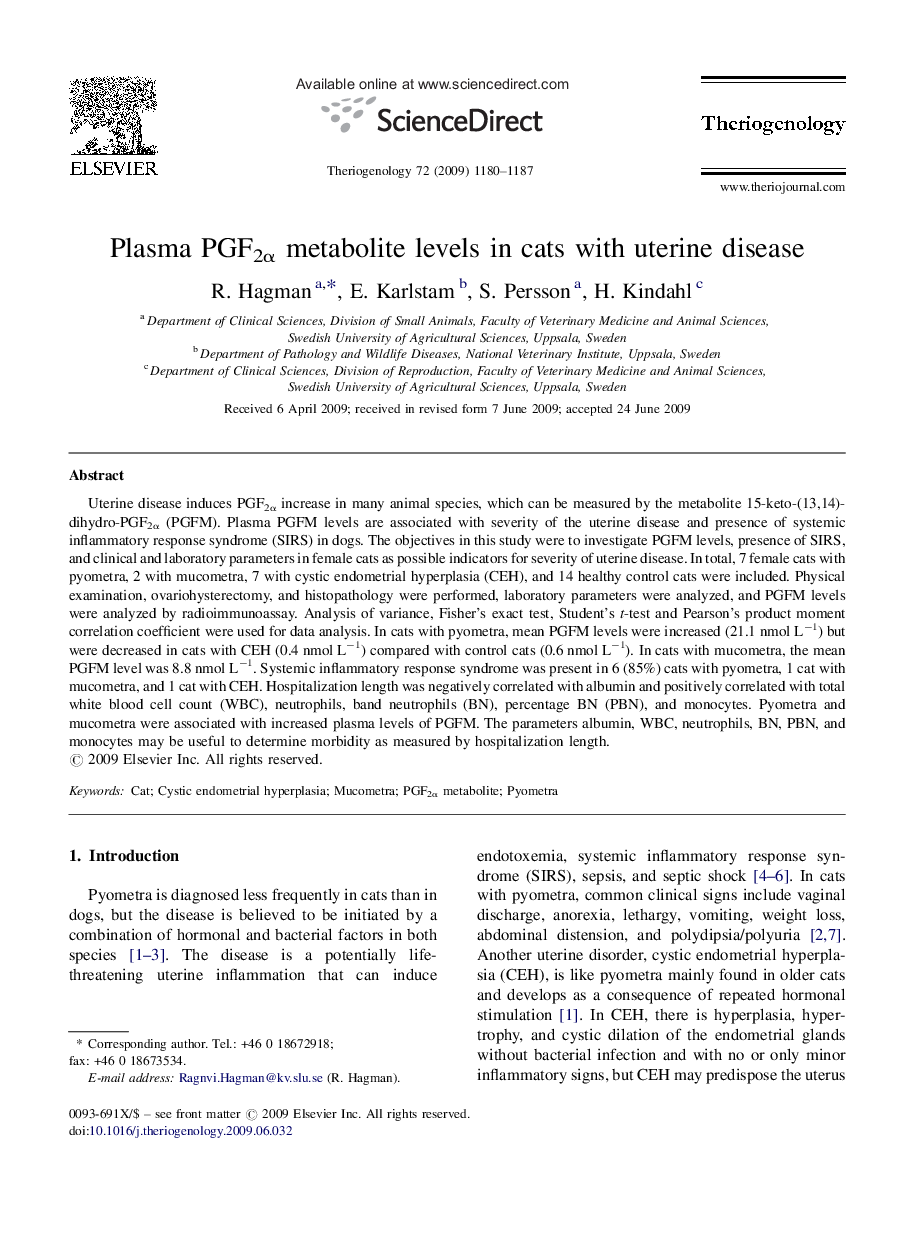| Article ID | Journal | Published Year | Pages | File Type |
|---|---|---|---|---|
| 2096575 | Theriogenology | 2009 | 8 Pages |
Uterine disease induces PGF2α increase in many animal species, which can be measured by the metabolite 15-keto-(13,14)-dihydro-PGF2α (PGFM). Plasma PGFM levels are associated with severity of the uterine disease and presence of systemic inflammatory response syndrome (SIRS) in dogs. The objectives in this study were to investigate PGFM levels, presence of SIRS, and clinical and laboratory parameters in female cats as possible indicators for severity of uterine disease. In total, 7 female cats with pyometra, 2 with mucometra, 7 with cystic endometrial hyperplasia (CEH), and 14 healthy control cats were included. Physical examination, ovariohysterectomy, and histopathology were performed, laboratory parameters were analyzed, and PGFM levels were analyzed by radioimmunoassay. Analysis of variance, Fisher's exact test, Student's t-test and Pearson's product moment correlation coefficient were used for data analysis. In cats with pyometra, mean PGFM levels were increased (21.1 nmol L−1) but were decreased in cats with CEH (0.4 nmol L−1) compared with control cats (0.6 nmol L−1). In cats with mucometra, the mean PGFM level was 8.8 nmol L−1. Systemic inflammatory response syndrome was present in 6 (85%) cats with pyometra, 1 cat with mucometra, and 1 cat with CEH. Hospitalization length was negatively correlated with albumin and positively correlated with total white blood cell count (WBC), neutrophils, band neutrophils (BN), percentage BN (PBN), and monocytes. Pyometra and mucometra were associated with increased plasma levels of PGFM. The parameters albumin, WBC, neutrophils, BN, PBN, and monocytes may be useful to determine morbidity as measured by hospitalization length.
